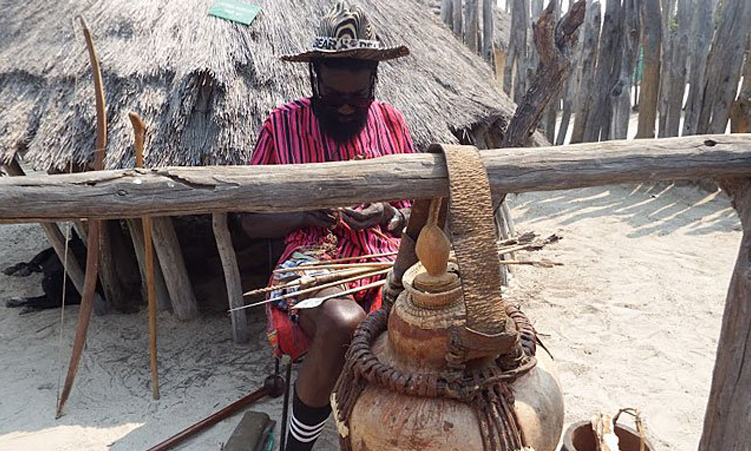In 2008, when I obtained my higher diploma in visual arts at the University of Namibia (Unam), I decided to dedicate myself to the development of arts and culture in Namibia.
I was fortunate to be awarded a three-month cultural exchange programme in Berlin, Germany, in 2009.
On my return to Namibia, I joined the Desert Research Foundation’s Livelihood Project for San people, to promote San arts and culture among the Okongo community.
Later I was hired by the National Heritage Council of Namibia to serve as a curator officer at the Eenhana Shrine national heritage site.
I was amazed when one day I received a call by the former late minister of youth, sport, arts and culture, Kazenambo Kazenambo, who appointed me to serve on the board of trustees of the National Art Gallery of Namibia from 2011 to 2013.
I decided to move to Windhoek, where I have been working as museum technician at the Office of the Vice President/Ministry of Defence and Veterans Affairs, which documented the history of the liberation struggle.
In 2021, my dream to study further forced me to resign from my full-time job, and I enrolled for a bachelor’s degree in history at Unam in 2021.
Today I am back home in the northern parts of Namibia, where I have been busy and involved in multiple cultural research projects promoting Namibia’s art, heritage, cultural tourism and museum development.
I discovered some challenges. One major challenge is poor investment of private and public cultural institutions to promote Namibian arts and culture, especially in rural areas, where the majority of Namibia’s communities are based.
Therefore I see an urgent need to decentralise resources for art and cultural development from Windhoek to all corners of Namibia.
Placing cultural officers and art extension officers all over the country without sufficient facilities, tools and budgets would not help us enough to promote arts and culture in rural areas.
Arts and culture could contribute to the social wellness and well-being of our people in rural areas, where we have no art galleries, theatres, museums, libraries or cultural centres.
Cultural events like traditional weddings and festivals are good opportunities to promote cultural tourism in rural areas and create more jobs for our unemployed youth.
But the lack of recognition of Namibia’s cultural and heritage resources is among the major obstacles to rural development in the country.
This was according to the findings of a report, titled ‘National Strategy on Sustainable Heritage Tourism Development and Employment Creation Opportunities at Community Level’.
Jean-Pierre Ilboudo, from Unesco’s Windhoek head office, in 2016 congratulated Namibia on the successful inscription of the marula fruit festival on the list of Intangible Heritage of Humanity.
Lastly, during the 2021 Africa Dialogue Series, secretary general António Guterres said: “Let’s use Africa’s rich heritage as catalyst for transformation.”
United Nations General Assembly president Volkan Bozkir also once said the societal impact of culture “cannot be overstated”.
A big problem is that arts and culture are non-promotional subjects in Namibian schools.
This would not motivate and inspire enough young people to choose a career in arts and culture at tertiary level.
Kleopas Nghikefelwa
Stay informed with The Namibian – your source for credible journalism. Get in-depth reporting and opinions for
only N$85 a month. Invest in journalism, invest in democracy –
Subscribe Now!






